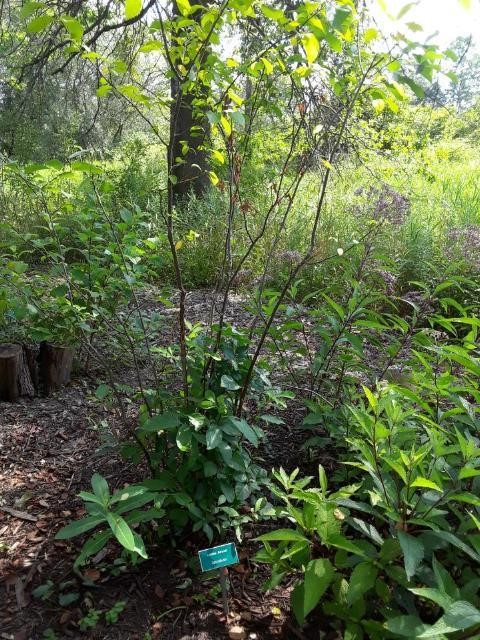by Charlie Maack
Spicebush Lindera benzoin
 Looking for a bush that likes moist feet and doesn’t require full sun? Then a Spicebush is right for you! Lindera benzoin is an understory shrub that handles full sun to part shade. It is happiest in part shade but will tolerant full sun provided it has adequate soil moisture.
Looking for a bush that likes moist feet and doesn’t require full sun? Then a Spicebush is right for you! Lindera benzoin is an understory shrub that handles full sun to part shade. It is happiest in part shade but will tolerant full sun provided it has adequate soil moisture.
When it reaches maturity, it will be round in shape and about 12 feet tall and 15 feet wide. Its name comes from the wonderful, spicy scent released when you scratch a stem. Despite its size, it is considered a shrub because of its multiple stems rather than a single trunk.
The Spicebush is a deciduous shrub that is native in the Northeastern portion of the country and has many attractive treats. It is one of the first to get its small yellow flowers in early Spring, and in the Fall, it produces small red berries and the leaves turn a marvelous bright yellow. The green elongated leaves are alternate on its branches.
Spicebush is dioecious, meaning that the male and female flowers are on separate plants and the female plants need a male pollinator to set fruit. The sex is difficult to identify in young plants, so either wait to buy two larger plants or to buy a small grouping, which should hopefully contain both sexes.
It is a useful plant to have in your butterfly and/or rain garden. One or more broods (generations) of female Spicebush Swallowtail butterflies will lay eggs on the leaves of a Spicebush. When the butterfly caterpillar is born it will eat some of the leaves before turning into a chrysalis then a butterfly. In the Fall the birds love to eat the berries. In fact, it is one of the most sought-after bushes by migrating birds to get their energy as they begin their journey South.
The Mercer County Master Gardeners maintain several Spicebushes at their Mercer Educational Gardens (MEG) at 431 A Federal City Road, in Pennington adjacent to the Mercer County Stables. The photo below is one of the small Spicebushes there.
Spicebush Swallowtail Butterfly
Notes
Information gathered from Virginia Tech Dendrology, Wikimedia Commons, http://entnemdept.ufl.edu/creatures/bfly/spicebush_swallowtail.htm

